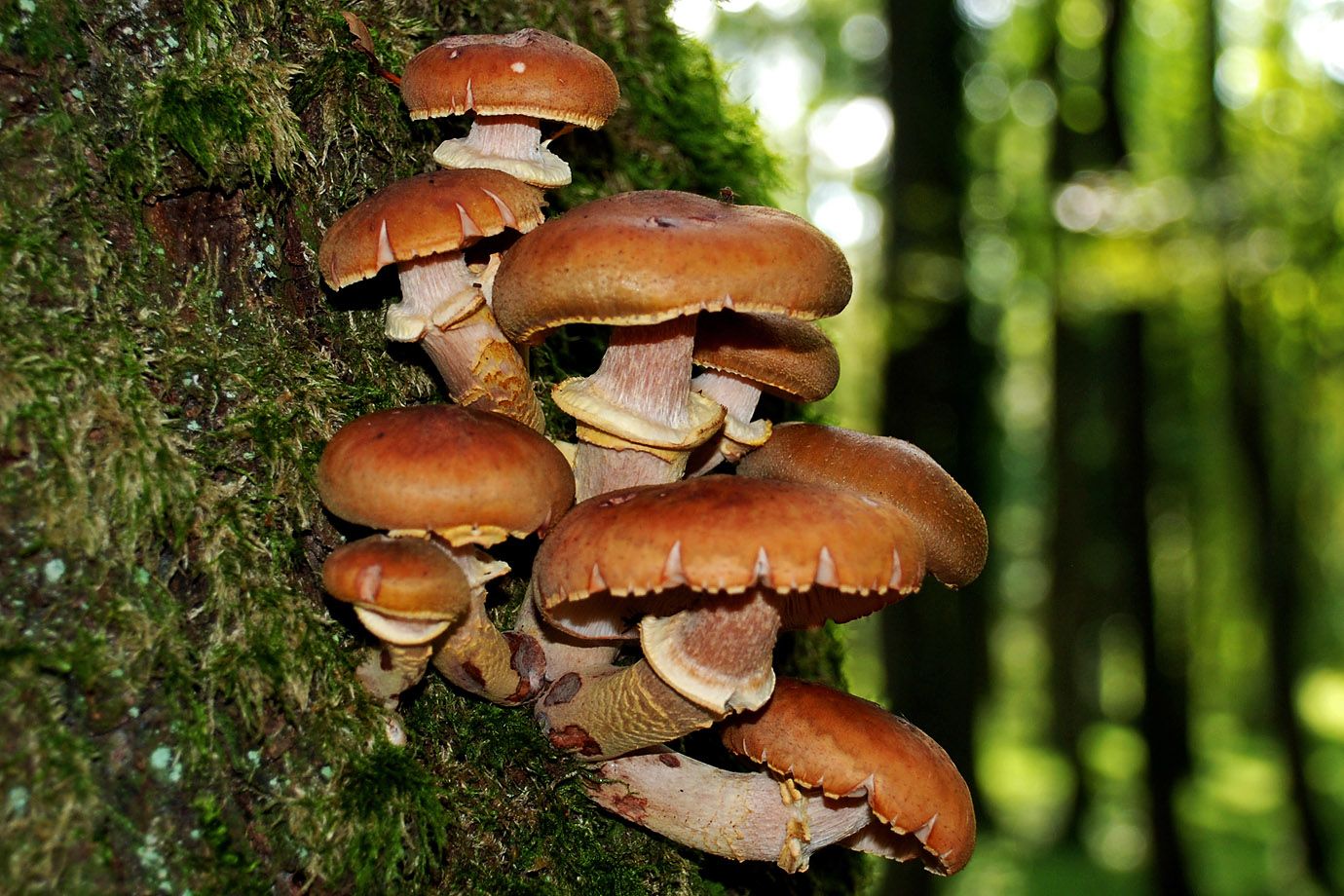
Honey Fungus
Honey fungus, or Armillaria or оpenky, is a genus of parasitic fungi that live on trees and woody shrubs. It includes about 10 species formerly lumped together as A. mellea. Armillarias are long lived and form some of the largest living organisms in the world. The largest single organism (of the species Armillaria solidipes) covers more than 3.4 square miles (8.9 km²) and is thousands of years old. Some species of Armillaria are bioluminescent and may be responsible for the phenomena known as foxfire and perhaps will o' the wisp.
In the Canadian Prairies (particularly Manitoba), the term "honey fungus" is unknown to many; due to the large presence of Ukrainian Canadians in this area, the fungus is often referred to as pidpenky (Ukrainian: підпеньки), from the Ukrainian term, "beneath the stump".
The fruit bodies of the fungus are mushrooms that grow on wood, typically in small dense clumps or tufts. Their caps are typically yellow-brown, somewhat sticky to touch when moist, and, depending on age, may range in shape from conical to convex to depressed in the center. The stem may or may not have a ring. All Armillaria species have a white spore print and none have a volva (compare Amanita).
Source: en.wikipedia.org/wiki/Honey_fungus - 25.10.2008








